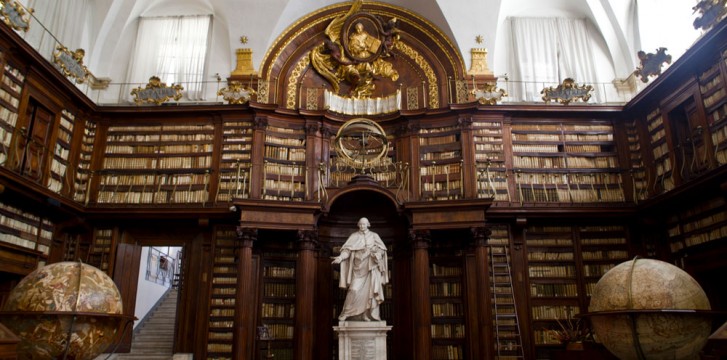The Biblioteca Casanatense is a library opened in 1701 at the Dominican convent of Santa Maria sopra Minerva in Rome.
Founded as a public library, in the beginning, it contained the collection of about 25,000 volumes that Cardinal Girolamo Casanate (1620-1700) donated, together with 160,000 scudi, with a will dated October 5, 1698, to create a large Roman library entrusted to the Dominicans.
The building that housed the library was suitably built, according to Casanate’s own will, within the Minerva complex, designed by architect Antonio Maria Borioni.
With subsequent acquisitions, the library was enriched with works on both traditionally religious and theological disciplines as well as studies of philosophy and Roman law, economics and works on the city of Rome.
It was among the most important libraries in Rome and among its curators the figure of Giovanni Battista Audiffredi (1714-1794) stands out. After 1872, with the law on the subversion of the ecclesiastical axis having been extended to Rome, the library passed onto the Italian State Administration, under the leadership of Carlo Gargiolli. The long direction of Ignazio Giorgi, was also very important. Starting in 1893, he introduced organizational improvements and inaugurated two new reading rooms.
Already in Rome? Book now a Colosseum and Vatican Private Tour
The Casanatense library today
Today the Casanatense Library is a peripheral institute of the Ministry of Cultural Heritage and Activities.
The Library is in good condition and fully functional in all its parts.
As a historical building, it obviously needs continuous structural maintenance work. However, updating the IT equipment (staff and users) and the technological equipment to carry out promotional activities in the monumental hall (sound system, video projection system, Wi-fi network) is an economic commitment that is as necessary as it is costly for the Institute.
These expenses should be covered by the ordinary budget, but it could also be extended by liberal donations to the Institute.
Of course, the prevention, protection and restoration of library holdings are done strategically for the Library: the dusting of the storerooms (including the Monumental Hall), for example, is essential for the good conservation of the books, but since it is very costly, it is carried out as little as possible. These expenses could also be covered by liberal donations. Good maintenance of the storerooms reduces the deterioration of books and thus the need for restoration.


